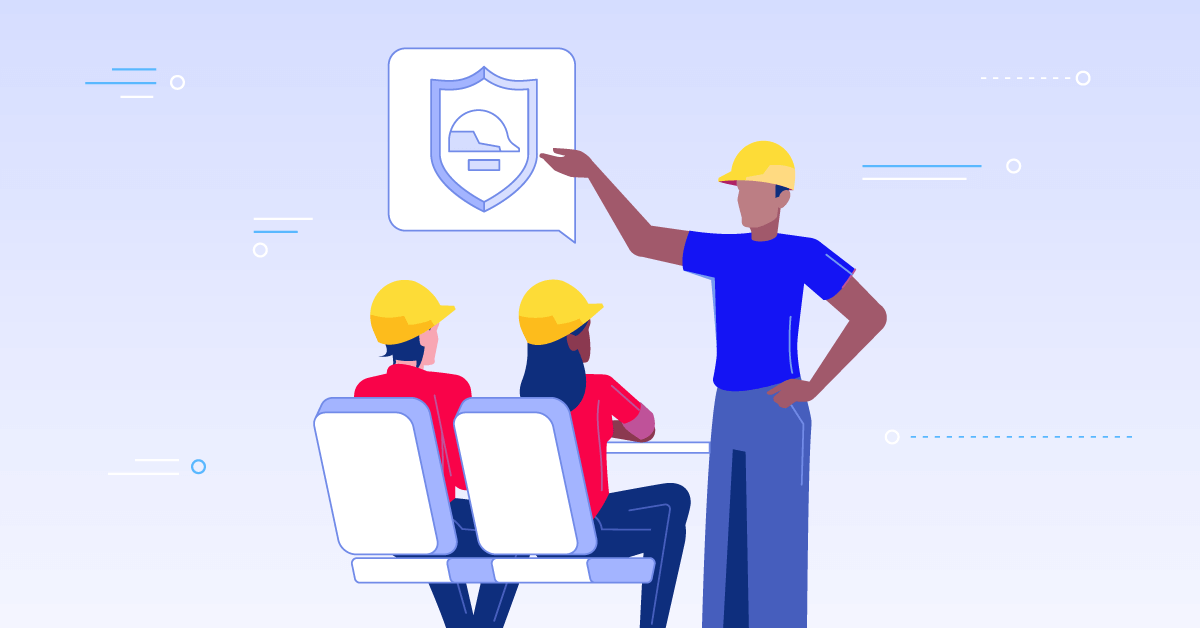
When adults join a training program, they bring with them two elements: they have varying levels of knowledge and they learn at varying paces. Competency-based training programs recognize these differences and match the training with the learner.
Unlike the content-based training, competency-based training programs focus on the trainer. This enables learners to move through topics on an as-needed basis.
It also means that the adult learners can progress through the training program quickly, without spending time on material they are already familiar with. They can focus on new content longer. Competency-based training saves time and money for you as a training manager.
The basic feature of any competency-based training is that it measures learning that occurs in a training program, rather than time. Simply put, your employees would progress through training based on their skills and competencies regardless of the time needed to complete the course.
Compare this with the “seat time” needed to complete a traditional course. In many cases, especially with experienced employees, traditional training is more detrimental than useful in terms of performance.
So, what you are doing here is holding the learning outcome constant while letting the time vary. This is the true essence of adult learning. A great recipe for training success.
Implemented effectively, competency-based education can improve quality and consistency, reduce costs, shorten the time required to complete, and provide you with true measures of employee learning.
So how can you implement a competency-based training program? Follow these four basic rules:
1. Measure employee learning rather than time
Why would you want to measure the time taken to complete a training program anyway?
Your focus should be the learning achieved in the course and the rate of transfer to the performance context. Allow the flexibility to move through training based on the skills of your learner.
This means enabling learners to tackle chapters and exercises in any order they desire. Also, have a grading scheme that measures the quality of online community submissions.
If learners respond to each other’s help questions, make them leaders in their area. This gives their peers the idea of exemplary behavior and performance.
2. Harness the power of technology for teaching and learning
A typical feature of competency-based trainings is that they are computer mediated. They could be online on a learning management system or standalone.
Educational technology provides the desired flexibility to modify the training and development plan according to the learners. Technology fulfills the learning measurement requirement of the competency-based program.
Have the learners submit their assignments using a variety of educational technology tools. Create links to tutorials or create short tutorials that teach learners how to use a tool to develop an assignment. A simple example is the use of Prezi or Powtoon instead of the usual Power Point tool.
In the same way, use Facebook or Twitter to communicate with your learners by creating dedicated course pages in these social media applications. In short, try to re-create the real-world work environment scene through productivity-enhancing technology.
3. Shift the focus from the Trainer to the Trainee
When trainers become talking heads, holding scheduled training sessions for a pre-determined time, the instruction takes place at the trainers’ pace. For most trainees, this will be the wrong pace.
Some will need to go more slowly; others will be able to move much faster. Competency-based learning shifts the role of the trainer from that of “a sage on the stage” to a “guide on the side.”
Trainers become the mentors who redirect conversations to synthesize and transfer knowledge according to the work context of the learners. This is one of the biggest benefits of an eLearning course. Learning is more focused on the learner than the trainer.
This means that the course dynamics will change with each batch of learners based on their unique needs, experiences and goals.
4. Align competencies with assessments
Competencies or performance objectives define the performance in your organization. They enable you, the manager to evaluate your employees based on the performance criteria.
Align these competencies directly with the organization’s performance requirements. Then, create practice opportunities in the training environment. These are assessments that will gauge the learning progress.
Involve experts in this stage and have the line managers assess the learners during the training program so that improvements can be reinforced. For example, if you have a low-score assessment result, you can increase reinforcement activities to improve competency achievement. This strategy saves time and creates a true competency-based training program.
Creating a competency-based mainstream training program is not as challenging as it seems. Good luck. Do share your experiences with us!


